Contents
The fruits of this beautiful deciduous tree have been known since antiquity, they were recommended for use in many diseases by Avicenna, they perfectly saturate the body with calcium, iron, copper, phosphorus and vitamins. It was the quince that Paris gave to Aphrodite, the winner in the dispute of three goddesses about beauty. Growing quince in our conditions is not as common as in the south of Europe, in Asia or the Caucasus, but many summer residents dare to take such a step, and caring for quince is not too difficult, but the result is impressive.
Cultivation
Quince can grow as a shrub or tree from 1,5 to 4 meters high. Young branches are hairy, as if they are covered with gray velvet, the bark on the trunk and old branches is thin, easily peeling, dark gray, sometimes with a brown tint. Dark green large oval leaves on the underside are also covered with a grayish fluff. The trees begin to bloom in May, they are quite large, often solitary, they look very beautiful, they are pink of different intensity or even purple. The fruit, usually large, slightly apple or pear-like, round and irregular, turns yellow as it ripens, with some varieties developing a pink blush. The diameter of the fruits of wild trees does not exceed 4 cm, and the cultivated ones are about 15 cm, they, like young shoots and leaves, are slightly covered with velvet villi.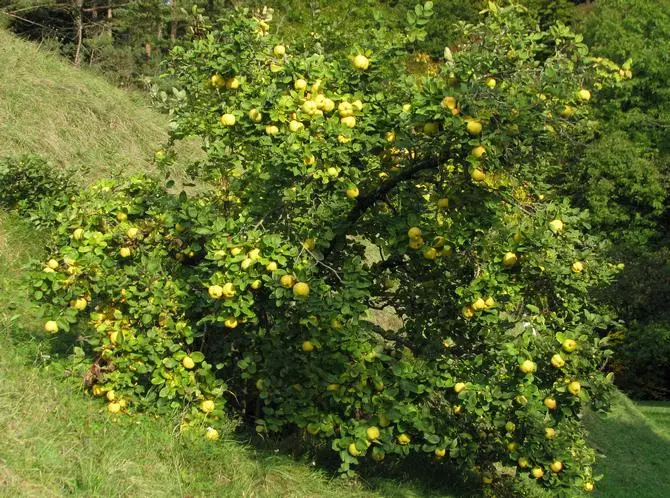
Fruit ripening occurs by the end of September, but it is difficult to eat them fresh right away, despite the pleasant aroma, tasty juice and a huge amount of useful substances – stiffness, viscosity and villi make this action physically difficult. They produce very tasty juices, compotes, jellies, jams, marmalades, marmalades. You can store them until spring at a temperature not higher than +3 degrees, and over time they become softer, acquire more sugars, and lose their viscosity. In addition to desserts, they are used as a seasoning for cooking meat.
Trees are durable, they live up to 60 years, actively bear fruit for 50 years, starting from 3-4 years of age. One tree can give from 25 to 100 kg of fruits per year, which can even bring commercial benefits from growing quince.
A very beautiful quince tree, flowering makes it even more attractive, sometimes, when growing, people use it only as an ornamental crop, and not for the sake of fruits. It propagates quite easily in several ways – by seeds, layering and root shoots.
Soil preparation
Many gardeners simply do not know how to grow quince, but it is a relative of many of our fruit trees – apples, pears, plums, and can grow in similar conditions. The tree is unpretentious, drought-resistant, can grow in almost any soil. But it feels best and gives large juicy fruits on heavy clay soils, especially if you prepare the place in advance. Light soil with a high sand content will cause the tree to bear fruit earlier, but the overall lifespan and yield will be much less. 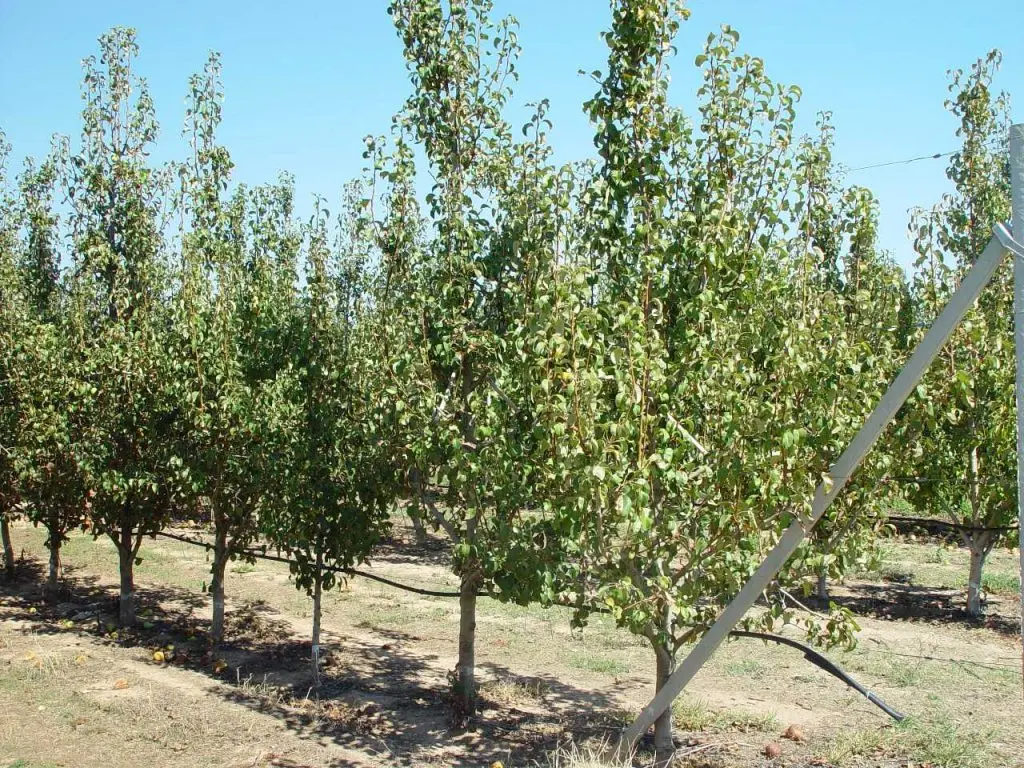 You can plant a seedling in spring and autumn, while the tree is at rest. Before the autumn planting, they find an open warm place, in the spring they dig it up to a depth of 30–40 cm, while adding superphosphate and potassium salt. Then watered and left until autumn. During spring planting, soil preparation is carried out in the fall.
You can plant a seedling in spring and autumn, while the tree is at rest. Before the autumn planting, they find an open warm place, in the spring they dig it up to a depth of 30–40 cm, while adding superphosphate and potassium salt. Then watered and left until autumn. During spring planting, soil preparation is carried out in the fall.
Planting of seedlings
The root system of this crop does not grow very deep, but its width is several times greater than the crown of the tree, so they dig a hole for planting up to 90 cm wide, at least 40 cm deep. The distance to the nearest tree or building should be at least 5 m. a layer of clay is laid at the bottom of the pit, a strong peg is driven in for a garter, then a third of the pit is filled with fertile soil mixed with superphosphate and wood ash. 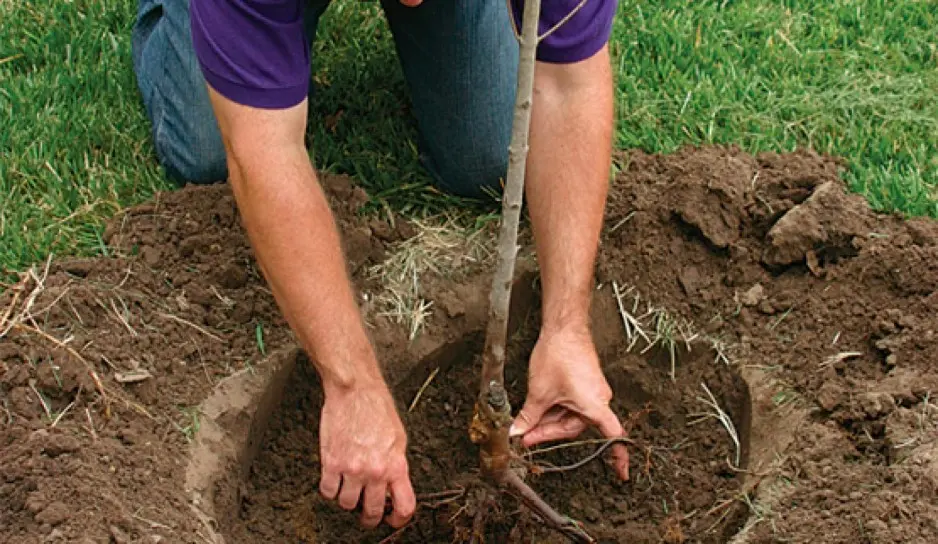 A seedling with straightened roots is placed on top and carefully covered with earth, lightly ramming it around the stem. After planting, the tree is watered abundantly, the ground around is mulched with peat or humus, in spring the mulch layer should be approximately 5 cm, and in autumn – 10 cm.
A seedling with straightened roots is placed on top and carefully covered with earth, lightly ramming it around the stem. After planting, the tree is watered abundantly, the ground around is mulched with peat or humus, in spring the mulch layer should be approximately 5 cm, and in autumn – 10 cm.
Video “Growing”
From the video you will learn how to grow this tree.
Care
Quince, the cultivation and care of which so scares many summer residents, is an unpretentious and very resistant plant, it is grown as a standard tree, forming it with pruning from the first year. She responds well to care, you need to carefully monitor her only in the first years, until the tender seedling turns into a strong young tree, then courtship comes down to rare watering, top dressing, pruning and preventive treatments against diseases and pests. The result will be a wonderful harvest grown on your site.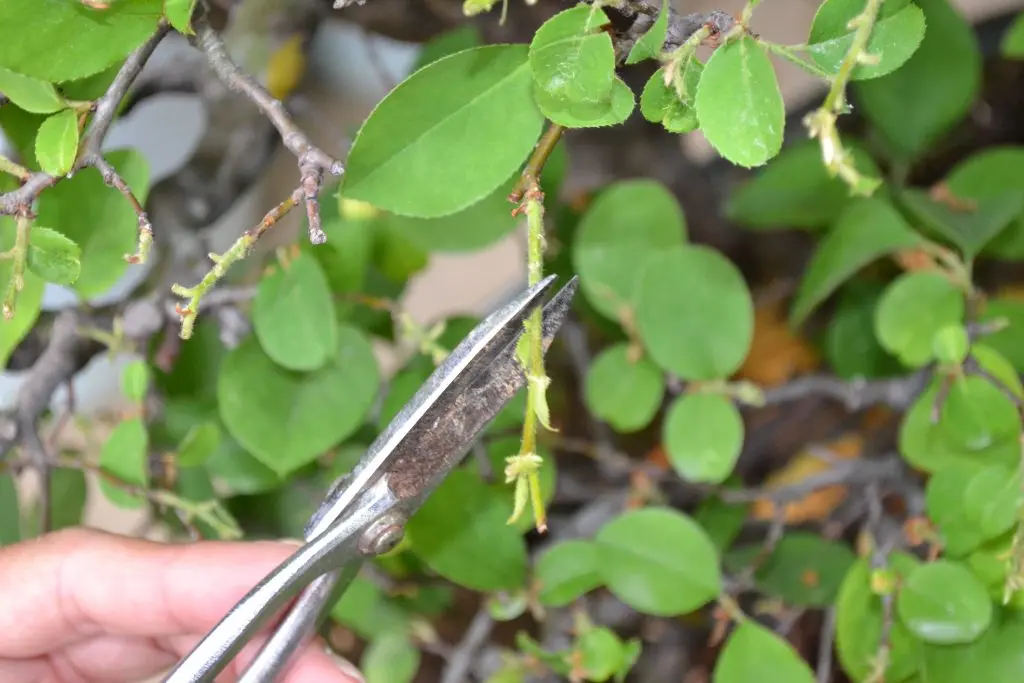
A young tree is watered more often, and an adult is watered 4 to 5 times per season. The first time it is watered before flowering, then a flowering tree is watered, the formation of ovaries is supported with moisture, the growth of new shoots and fruits. The last watering occurs at the end of August or the beginning of September (in mature plants). Each time a lot of water is poured, under a young tree – up to 400 liters, and under an adult – up to 800 liters. After watering, the soil must be loosened to a depth of 5 – 8 cm.
The trunk circle needs to be freed from weeds, and it is not necessary to grow any plants there so as not to damage the quince roots, its root system is located close to the surface, capturing a large space, it is better not to take nutrients from it. If you mulch the trunk circle, you will have to weed and loosen the ground less often.
Trimming
The technique of pruning quince is akin to pruning an apple tree. In a young tree, starting from the first year, a crown is formed, then it remains only to support it. Sanitary pruning can take place all summer – dry leaves, broken or improperly growing branches must be removed constantly, while the main pruning, shaping or rejuvenating, is done in autumn or spring, when the movement of juices has already stopped or has not yet begun.
In an annual tree, the lower tier of the main branches is formed, retreating 50–60 cm from the grafting site, leaving 3–4 branches at a distance of 10–15 cm from each other. The second tier will be single shoots at intervals of up to 35 cm.
All skeletal branches should grow at a 45 degree angle to the trunk.
In a two-year-old tree, the lower main branches are shortened, leaving 50 cm from the base, other shoots are cut in approximately the same way, and the main conductor is cut 25 cm above all other branches. With the onset of fruiting, the branches are simply shortened and thinned out, then rejuvenating pruning begins, when five-year-old shoots are removed, on which an ever smaller number of fruits are formed.
Feeding
If, when planting, the pit was well filled with organic fertilizers, then the next portion of organic matter can be given after 2 years, but this crop should be fed with mineral fertilizers three times during the growing season. Usually, in the spring, nitrogen fertilizers are scattered around the trunk, which are gradually delivered to the roots with moisture. After flowering and in August, the trunk circle is watered with a solution of potassium-phosphorus fertilizers.
In the spring after the first watering and in the fall, in preparation for winter, the trunk circle is mulched with compost or peat, which also slowly but constantly send nutrients to the roots.
Preparation for winter
In autumn, water-charging irrigation is carried out, that is, up to 800 liters of water is poured under each tree to nourish the root system until spring. This will help them to endure frosts more easily. After harvesting, they carry out preventive treatment for scab (usually a urea solution is used), when the leaf fall ends, you can carry out sanitary pruning, and then start warming the trees before the onset of frost.
Many varieties of quince are considered hardy, but young trees are best protected from severe frosts. Close to the surface of the earth, located roots can freeze even in mature trees, so the near-stem circle is usually mulched with humus or compost to a height of at least 15–20 cm, covering the base of the trunk. The trunk and bases of the lower branches are whitewashed with lime. Young trees are covered more carefully. They are wrapped with lutrasil or other similar material, then tied with spruce branches, and in winter they pile up a lot of snow. Some gardeners make a roofing material pipe around a small tree covered with earth and compost, cover it with dry leaves, and in winter they try to fill a high snowdrift. So her fragile plant survives the first, and sometimes the second winter.
The best “neighbors”
Under the quince, it is desirable not to plant anything at all. Not only will she hide these plants in her shade, but her roots will be deprived of nutrients, and may suffer from neighbors. She herself also does not like the shadow, or rather, she tolerates it normally, but the branches become thinner, and the fruits are smaller, so it is not recommended to plant trees nearby (within a radius of 5 meters).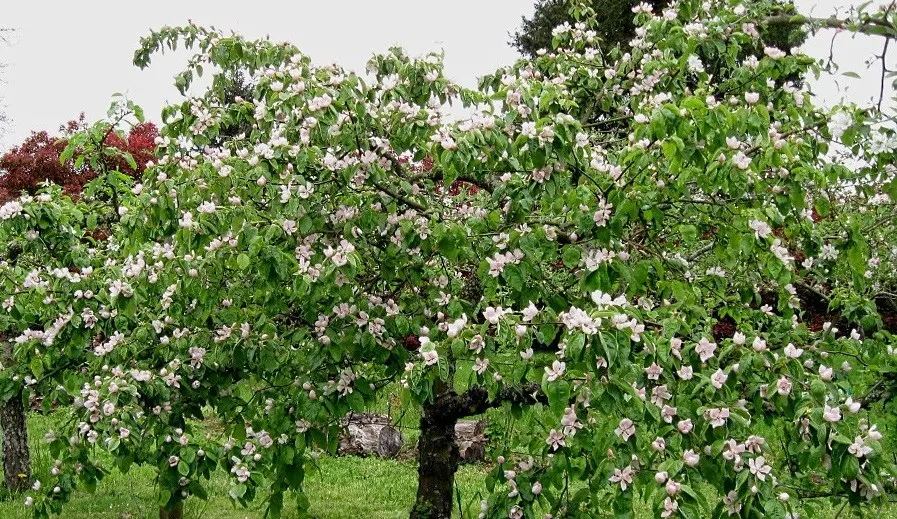
Cultivated varieties are self-fertile, but the quality of the crop will improve if other varieties of quince or at least related apple and pear trees grow nearby.
Diseases and pests
It is believed that quince has strong immunity, a healthy plant is not afraid of diseases, so proper care can protect the tree from these troubles. But still, it can suffer from powdery mildew, scab, moniliosis and other diseases.
Powdery mildew is especially dangerous in damp, cool summers. It first affects young annual shoots, manifesting itself as a light bloom, then it becomes a dense brown film, the ovaries crumble, the leaves become deformed, the shoots dry out. The affected parts must be cut and destroyed, and the entire tree must be treated with fungicides, preferably several times.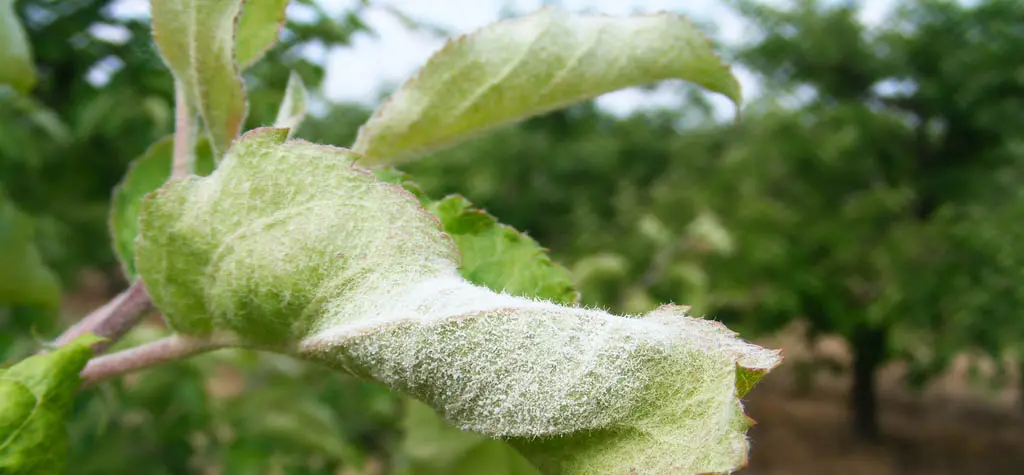
Brownish leaves are possible, which appears as rounded brown spots on the leaves, and over time causes them to curl, dry out, and crumble prematurely. Fallen leaves must be burned, and the tree and the ground under it must be treated with Bordeaux liquid.
Moniliosis, or fruit rot, may appear in too wet spring, but it already appears on the fruit. Brown spots appear on them, which grow and make the fruit unusable.
Rust and rotting of the ovaries also first form spots, tubercles on the leaves, and then kill the leaves and ovaries. They are treated with Fundazol.
Pathogenic organisms settle on plant debris near the tree, they may not be active for a long time, but if the tree weakens for any reason, if the weather is on their side, then infection is quite possible. To minimize this possibility, you need to monitor the condition of the land under the crown, take preventive measures. So in the spring, while the buds have not yet blossomed, the whole plant is treated with Bordeaux liquid. The earth around is watered with a solution of potassium permanganate. To protect the plant from pests (aphids, mining moths, sawflies, moths) and fungal spores that cause powdery mildew, a Fastak solution is used before flowering.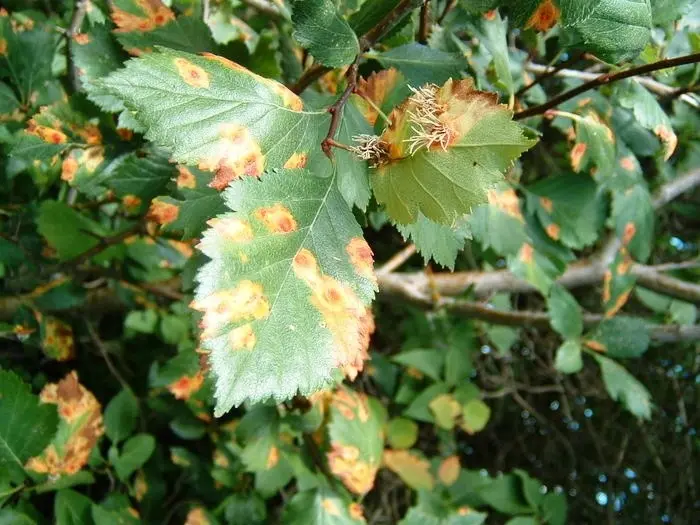
After flowering, the tree is recommended to be treated with Topaz so that leaf-eating pests, scab and fruit rot do not spoil the plant. In the summer, you can use “Strobe” or “Kemifos” from pests and fungal diseases, but they stop using chemicals a month and a half before harvesting. And after the litter of the harvest, the tree is again treated with Bordeaux liquid or a solution of copper sulphate.
Varieties
There are two varieties of quince – common and Japanese. Japanese quince is a shrub with bright flowers, they are pink and red-orange, they look very decorative, but the fruits are too hard, which may be why it is less popular than common quince. Our gardeners cultivate exactly the ordinary or oblong, as it is also called. Among the most popular varieties, there are several that differ in terms of ripening.
By the end of September, the “Early Oiler” ripens. The weight of large lemon-colored fruits ranges from 190 g to 150 g. They are round-conical, smooth, ribbed, very fragrant, fine-grained yellowish flesh has a sweet and sour taste, the longer they are stored, the less viscous it becomes.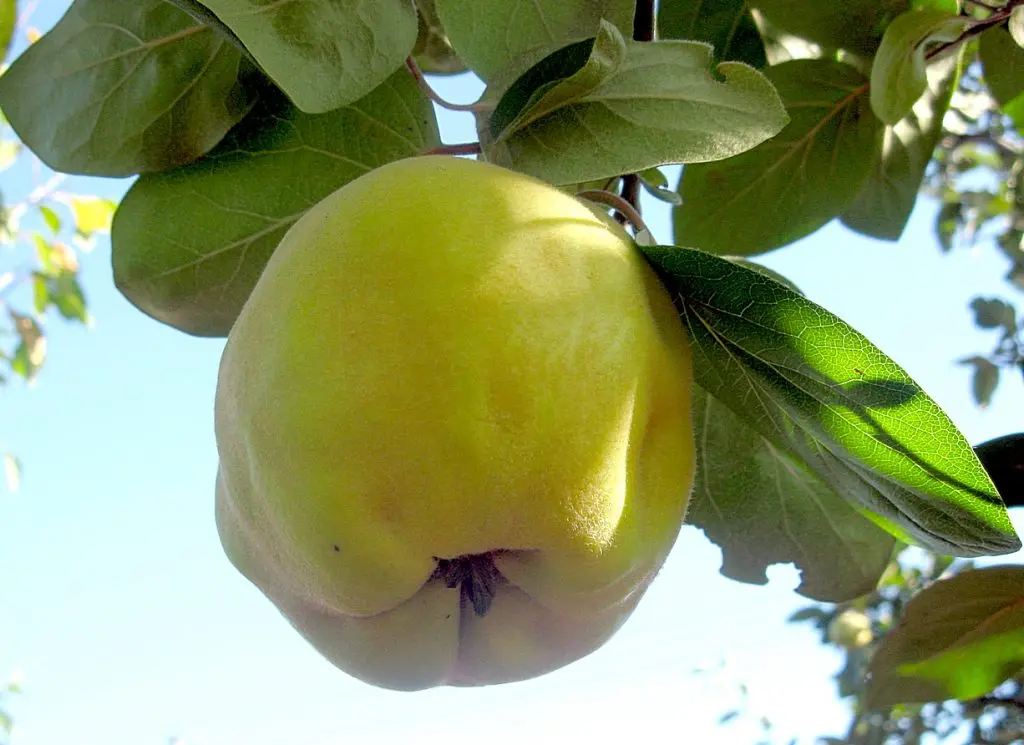
“Juicy” with fruits weighing 250 g, characterized by winter hardiness and indifference to lack of moisture. Juicy fruits with yellowish flesh have a sour-sweet taste.
“Crimean aromatic” ripens by the second half of September, its smooth lemon-colored fruits are sour, with yellow flesh.
Until mid-October, Kubanskaya, Astrakhanskaya, Kaunchi 10, and Beretski ripen. Dense and sweet fruits of “Kaunchi 10” are pear-shaped and distinctly pubescent. And “Beretski” is a partially self-fertile variety. Its delicious sweet fruits can be eaten fresh, but only if the Champion, Giant, Portuguese varieties that grew nearby were used for pollination.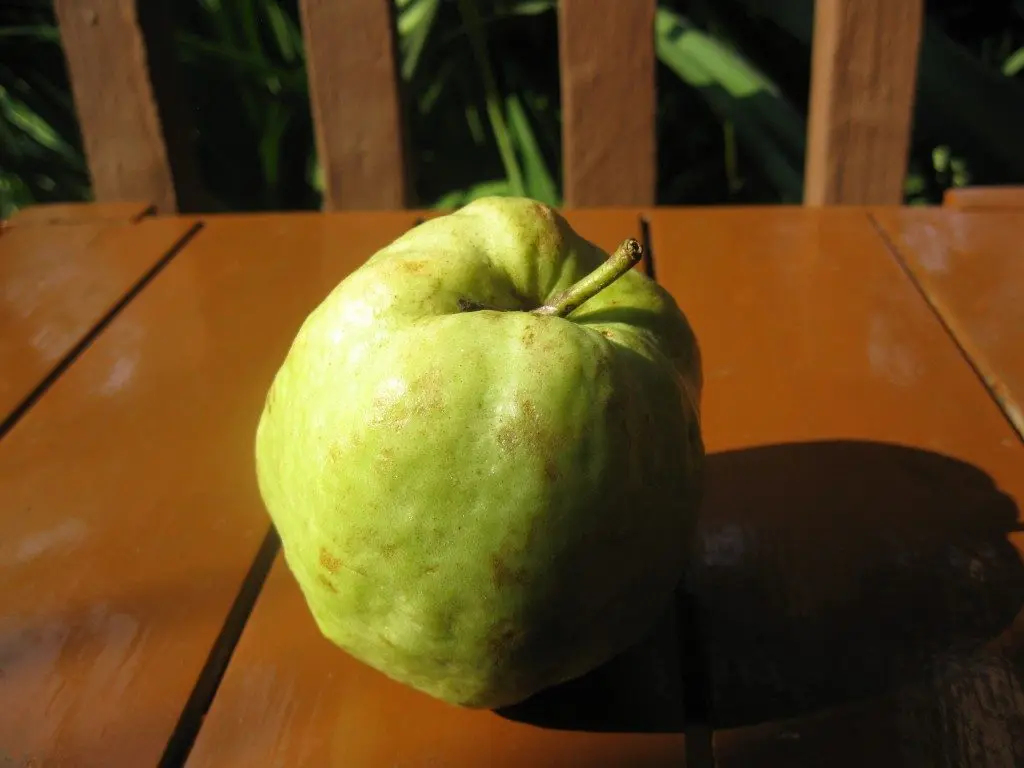
Late varieties ripen by early or mid-November. “Portuguese” is a partially self-fertile variety with pear-shaped viscous fruits. Productive, indifferent to cold, wind and diseases, the Dagestan variety “Zubutlinskaya” gives huge (up to 800 g) felt fruits of golden color with juicy tasty pulp. “Buinakskaya large-fruited”, “Ktyun-zhum” – their light yellow fruits are famous for their pleasant sweet and sour taste, it’s a pity that not everywhere there is such a warm November for them to ripen.
Such varieties are suitable for the Moscow region: “Muscat”, “Amber”, “Success”, “Firstborn”. They are not striking in size, but ripen perfectly, allowing you to prepare delicious desserts from very healthy fruits. They differ slightly in taste, but after a month and a half after harvest, everything becomes much sweeter and loses viscosity.
Video “Care”
From the video you will learn how to care for a tree.










Mám kdoule ,rodí .Byla napadena bobry ale vzpamatovala se. Plody jsou uvnitř HOUBOVITÉ A HNĚDÉ. Co s tím? Nevoní,nedají se jíst,po oloupání okamžitě s hnědnou.Úroda je bohatá až 800g kusy.